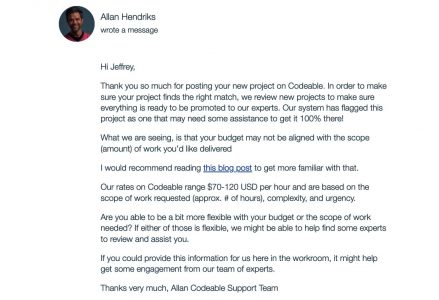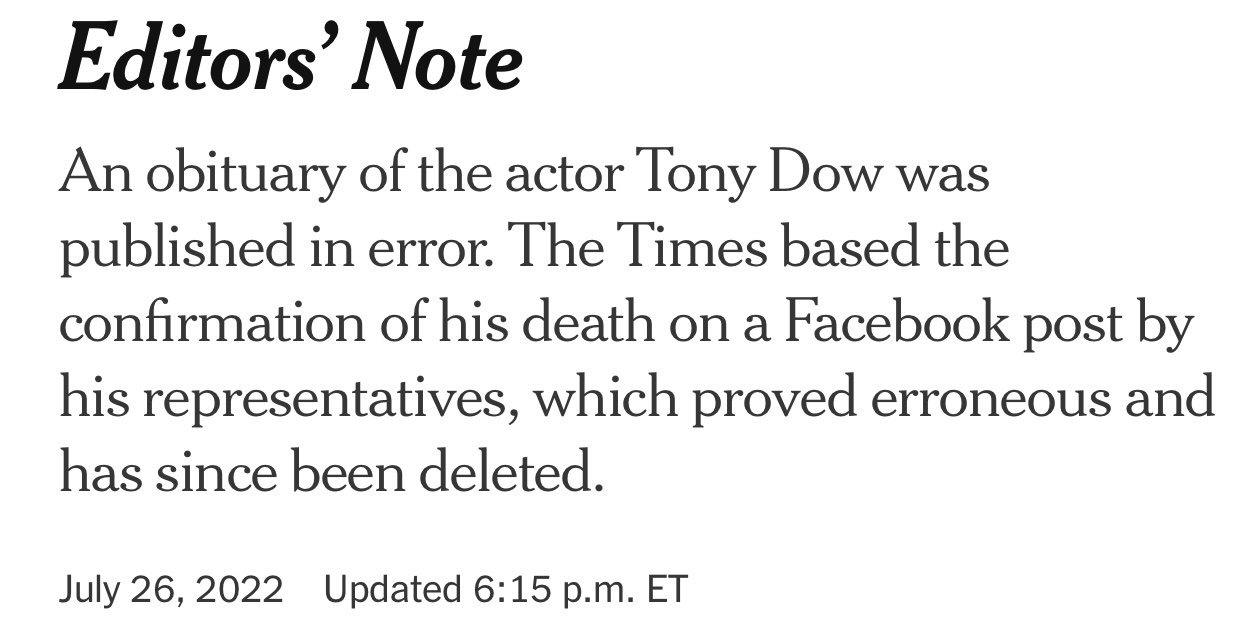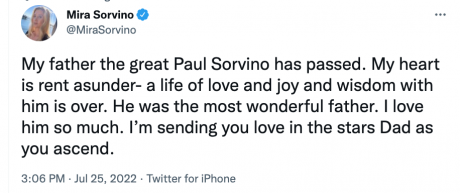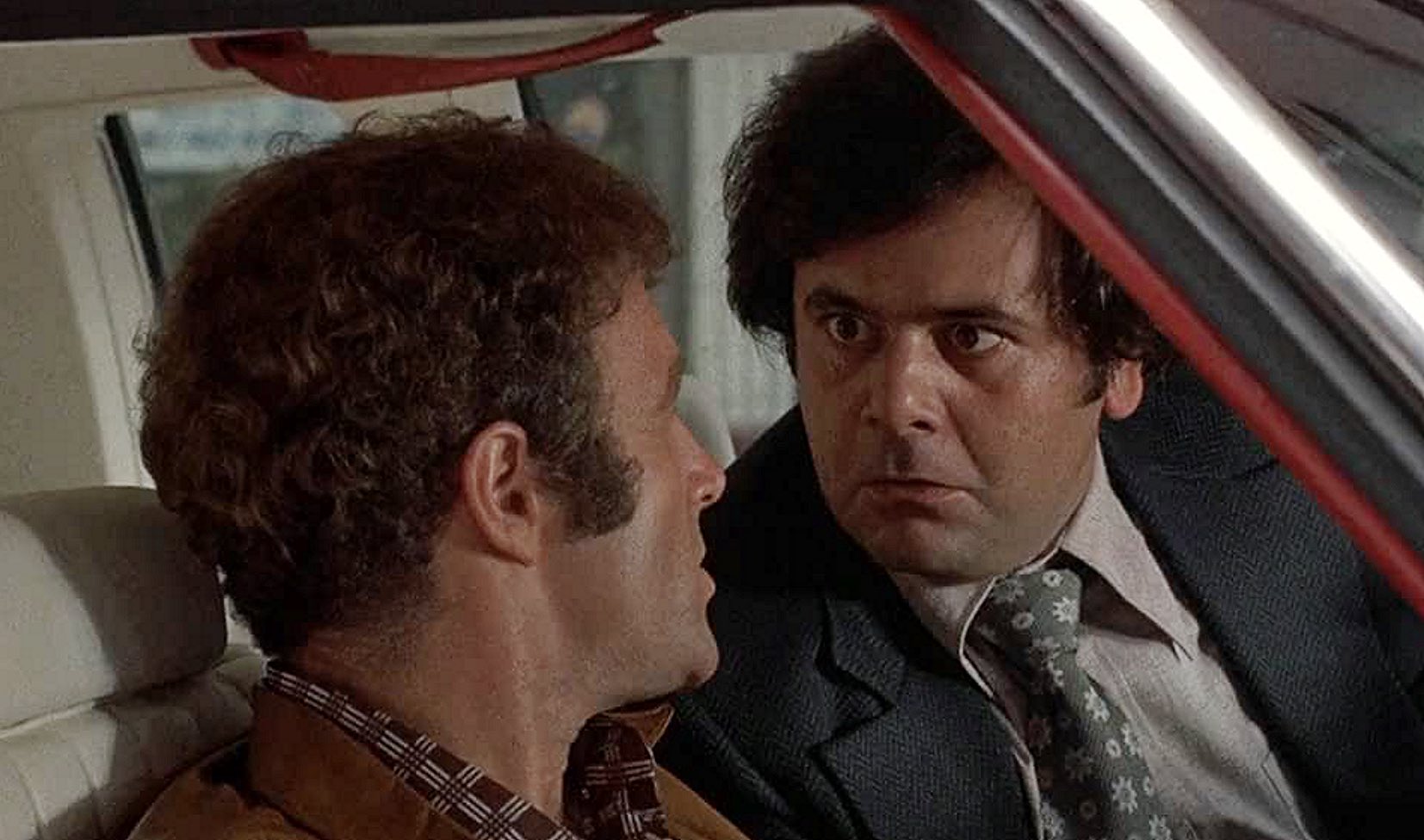No, I never even saw Ti West‘s X (A24, 3.18.22) much less reviewed it, and I don’t give a shit. Okay, I guess I’ll stream it so I can more fully appreciate Pearl (A24, 9.16.22).
Nothing Would Make HE Happier
…than to learn that the Marvel machine has finally, irretrievably ground to a halt. 14 years of this shit. Alas…
From Richard Rushfield‘s “Who Killed the Marvel Juggernaut?,” an Ankler piece that appeared this afternoon:
“What has been the effect of having new Marvel material — directly tied to the films — rolling out constantly on TV?
“Part of the wonder of Marvel films was their scarcity. As social media grew simultaneously and pushed to show you every nook and cranny of the latest news cycles phenomenon, as stars raced to display ever more of themselves to feed the monster, Marvel was releasing a handful of movies a year. A lot by movie standards but by the standards of the culture, a stately output.
“Now there’s a new Marvel thing every week. There’s always a new Marvel thing. And yes, the Marvel movies are a bigger thing in theory — at least they have a bigger marketing budget behind them — but how much of that gets lost? In people’s minds, is the rollout of Shang-Chi of a different dimension of magnitude from the rollout of Hawkeye?
“There are those, like the folks filling Hall H last week, who can’t get enough. You could give them 27 new series a week and they’d still be camping out in costume for opening day of Thor 15.
“But for the rest of the world, where the trick, now more than ever, is convincing them that this new film is an event worth leaving the house for, how does the constant availability of new Marvel material affect that?”
Cold Oscar Feet: Scorsese’s “Flower Moon” Eyed for Cannes ’23
Deadline‘s “The Dish” (Justin Kroll + Mike Fleming, Jr.) has heard that Martin Scorsese‘s Killers of the Flower Moon, which has been screened in rough-cut form and raved about, is skipping the ’22 Oscar race in favor of a possible “global showcase premiere” at the 2023 Cannes Film Festival. This would be followed by Flower Moon opening theatrically through Paramount before the big Apple + debut in the mid-to-late fall, blah blah.
HE worships Mr. Scorsese and is down for Flower Moon this year or next or any which way, but there’s no masking the immense clouds of disappointment that this story has created…a deep black shadow has fallen over the Oscar landscape.
The idea of Apple, Paramount and Scorsese having seemingly lost their nerve and cut bait on the ’22 Best Picture race…it’s just shattering.
I’m not saying that I know anything or that the alleged take-it-to-Cannes plan is locked in (I hope it isn’t!), and yes, this may be thin speculation on Kroll-and-Fleming’s part, but Variety‘s Clayton Davis is also saying it’s real, and I’ve got the blues, man…I’ve really got the blues.

If the Kroll-Fleming-Davis story turns out to be true, here’s my theory: When Scorsese’s The Irishman, a brilliant, gut-slamming gangster epic for the ages, lost the Best Picture prize to Bong Joon-ho‘s generally decent but slightly underwhelming Parasite (certainly in terms of the con-artist family letting the fired maid into the home during a cats-and-dogs rainstorm — easily the most moronic plot turn of the 21st Century), Hollywood marketing savants were confronted with a new social chemistry.
Scorsese’s loss told them that (a) younger Academy voters regarded the Scorsese gangster brand (and in fact white-guy directors in general) as yesterday’s news, and (b) were more excited about giving the Best Picture Oscar to a South Korean film that was directed and written by a chubby, non-white guy…that was the message they wanted to send.
So even though Killers of the Flower Moon, a sprawling historical melodrama set in 1920s Oklahoma, qualifies as an anti-white-guy “woke” film, there is concern on the part of nervous-nelly Apple and Paramount execs. After the Irishman setback they’re a tiny bit afraid that the once-prestigious Scorsese brand is no longer a slam-dunker (certainly among younger, female and person-of-color Academy members), and that Flower Moon needs a big, months-long build-up campaign because your 50-and-under Academy members (not to mention the overseas contingent) are half-inclined to look askance at a big, costly, ambitious film by a white-guy director who, after all, has had his four-decade period of glory (Mean Streets through The Wolf of Wall Street), and that the worm has turned and it’s time to celebrate movies that are either about or made by people of color for a change.
This, I’m afraid to say, is what might be behind the Great Killers of the Flower Moon Withdrawal Strategy of mid ’22, if, God forbid, the Kroll-Fleming-Davis story turns out to be true. Which it probably is.
Predators
“If you’re up goin’ to the city, you better have some cash / If you’re up goin’ to the city, you better have some cash / because the people in the city / they don’t mess around with trash” — Mose Allison, “If You’re Going To The City.”

HE to Codeable: “You guys always say the same thing, every damn time…if you’re small fry, don’t bother us….we don’t want to know any small-fry guys. Because you get what you pay for, so if you want top-quality remedies and grade-A professional help you’ll have to pay what we want you to pay us…and that means more than you’d like to pay. Which is why we don’t like small fry guys…no offense.”
Into Every Life A Little Rain Must Fall
It was announced two and a half months ago that Leave It To Beaver‘s Tony Dow had been stricken with liver cancer. (His second or third bout.) It was announced today that the 77 year-old sculptor and former actor-producer, a resident of Topanga Canyon, has passed.
Update: An early morning 7.26 post from The Hollywood Reporter‘s Mike Barnes states that while Dow is on his last legs in a hospice, he hasn’t actually died yet.

Dow apparently led a frustrating life in some respects, but who hasn’t grappled with ups and downs and crummy detours and shitty moods from time to time? In the ’90s Dow was coping with resentment and depression (which is often about anger turned inward), but if it hadn’t been for his Beaver fame certain doors might not have been opened and he might’ve had a more difficult time of it…who knows?
Wiki moment: “In December 2008 Dow was chosen as one of three bronze sculptors to show at the Société Nationale des Beaux-Arts exhibition, in the Carrousel du Louvre in Paris. He represented the United States delegation, which was composed of artists from the Karen Lynne Gallery.”
Soul Nourishment vs. Aching Backside
Four major films are set to debut at the Venice Film Festival — Alejandro Gonzalez Inarritu’s Bardo, Noah Baumbach’s White Noise, Andrew Dominik’s Blonde and Todd Field‘s Tar.
The total running time for these four films is 639 minutes, or roughly 10 and 1/2 hours.
That’s not counting walking to the theatre, waiting in line, post- and pre-screening bathroom breaks, etc.
I’m hoping to see all four in Telluride, of course.
According to Jordan Ruimy, Venice Film Festival honcho Alberto Barbera announced this morning that Bardo runs close to 180 minutes. We also know that the running times for White Noise, Tar and Blonde are 136, 158 and 165 minutes respectively.
Excellent
Or, if you will, just desserts.
I know I shouldn't laugh! 🤣🤣pic.twitter.com/nwWlNfCobU
— Figen (@TheFigen) July 25, 2022
Twitchy WordPress Strikes Again
The WordPress feature that counts and posts the number of comments is on the fritz. WordPress always gives you grief of one kind or another. The number of comments always appears on the upper right corner of each post. I’m trying to implement a fix as we speak.
Tuesday update, 12:30 pm: Various consultations have happened, and much fretting. A Manhattan guy has been hired to try and figure out the comment problem, and there are plans afoot to install a brand new version of the Armory theme, the most recent version of which was installed in 2016.
Perspective Brings Wisdom
And therefore it’s finally recognized, a decade after the fact and to the voting Academy’s eternal shame, that the 2011 Best Picture Oscar shouldn’t have gone to The Fucking Artist With a Cute Little Dog but to Bennett Miller‘s wise, seasoned and spiritually humming sports saga, Moneyball.
I knew the truth of things back then, but the mob was in love with Michel Hazanavicius’ black-and-white gimmick film and there was no talking them out of it.
Moneyball, Alexander Payne‘s The Descendants and Woody Allen‘s Midnight in Paris are the only 2011 Best Pic nominees that have stood the test of time. The Artist sure as hell hasn’t. And Extremely Loud & Incredibly Close, The Help, Hugo, The Tree of Life, War Horse…no need to re-bash but they weren’t good enough.

David Warner Passes On
Ask any film lover about the guy whose head was sliced off by a plate of glass in The Omen, and they’ll say “of course…yes.” Ask about the man who played Jack the Ripper in Time After Time…the guy who noted that in Victorian-era London he was a freak but in late ’70s San Francisco he’s an amateur…and the film lover will say “yup, definitely….I know that guy.” Or Spicer Lovejoy, the snooty manservant and bodyguard of Billy Zane‘s Caledon Hockley in Titanic.
But very few will name the actor who played these characters — David Warner.
For me the seminal Warner impression will always be Henry Niles in Sam Peckinpah‘s Straw Dogs (’71), although I could never figure out several things about Niles, whom one of the tough-guy characters calls “you bloody pervert.” Which Niles was, in a sense. Or at the very least a creep. He even tried to sexually attack Susan George during the climax, but it stopped when Dustin Hoffman grabs him by the shoulders, looks in Niles’ watery eyes and shakes his head in a stern no-no fashion.
The great David Warner, who was also an excellent stage actor, has expired at age 81.
Sorvino Ruled In The ’70s, ’80s and ’90s
The bear-like, Brooklyn-born, large-of-spirit Paul Sorvino has passed at age of 83. I ran into Sorvino at the Westport Country Playhouse tavern in ’77 or ’78, and what an aura…he was probably a little bombed but full of feeling and come-what-may passion…I smiled and patted Sorvino on the shoulder in a brotherly way and said “Yo, The Gambler!” and he went “oohhhh, yeah, yeah.” I was referring to Hips, the loan shark in Karel Riesz and James Toback‘s 1974 film, and that moment when he tells a deadbeat gambler who owes more than he has “you worthless contemptible deadbeat motherfucking dog…die!” Yes, his defining performance is Paul Cicero in Goodfellas (“Now I gotta turn my back”) but let’s not forget his performances in The Day of the Dolphin, Bloodbrothers, The Brink’s Job, Cruising, Reds (Louis Fraina!), That Championship Season (Phil Romano!), Dick Tracy (‘Lips’ Manlis!), The Firm (Tommie Morolto!), Nixon (Henry Kissinger!), and Bulworth.

“A Woman I’m Working With…”
“I had a difference of opinion with a woman I’m working with. I did something I thought was funny, and it wasn’t taken that way.” — Bill Murray to CNBC on or about 5.21.22.
Murray might have been referring to Being Mortal costar Keke Palmer, but there was another woman costar on that Aziz Ansari film — Christina Lanoux. But what are the odds that Lanoux, a woman with only one previous feature credit (Straight Outta Compton) from 2015, would throw a huge hissy fit and thereby halt production? What are the odds that Murray had any kind of substantial back-and-forth relationship with Lanoux during filming of Being Mortal? Ask yourself that.
Friendo to HE: “A studio wag says that Murray dropping out of Wes Anderson‘s Asteroid City over Covid is a convenient excuse, and that he’s heard that Murray isn’t insurable due to Being Mortal not restarting based on whatever antics he pulled.”
HE to friendo: “Murray suddenly isn’t ‘insurable’? Murray is known for behaving curiously and sometimes obnoxiously during filming, but he’s been that way for at least 40 years. A bit of an odd duck, but I know him a tiny bit (press junkets, party chats, watched him work during filming of Monuments Men in Germany) and he’s just colorful Bill. He likes to goof off and have fun but he doesn’t suffer fools.
“What do you do when you can sense that a certain actor (not Murray) is a defensive piece of work and a temperamental Millennial time bomb who’s ready to over-react to any identity-related issue at the drop of a hat?”
Friendo to HE: “In these agitated times a diva’s weaponry can possibly deliver an unfair kill shot, thanks to the fear caused in suites inhabited by invertebrate corporate hacks. Would another studio allow a filmmaker to hire Murray with the last film shut down and not restarted due to his supposed on-set conduct? They’re risk averse.”



